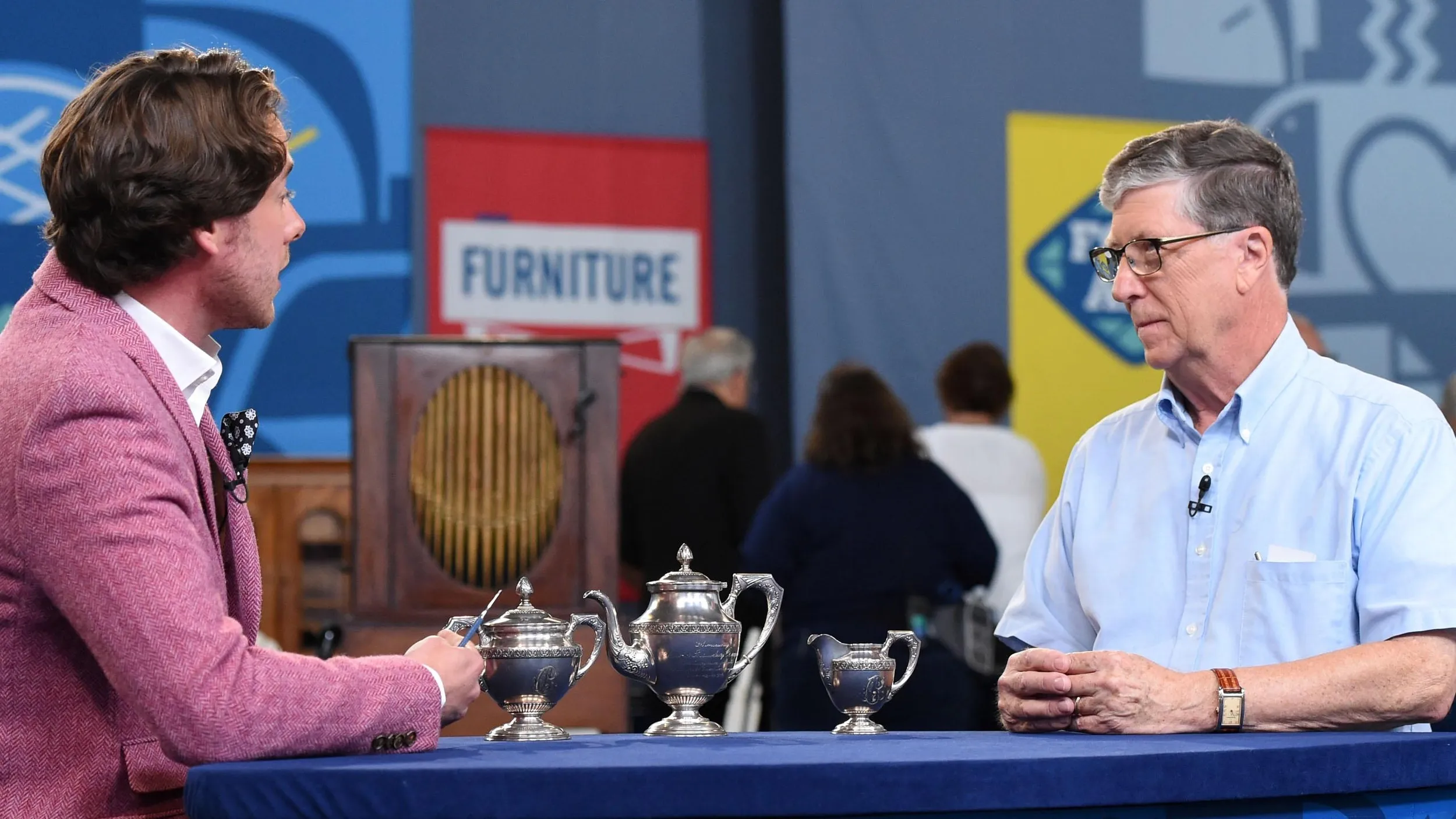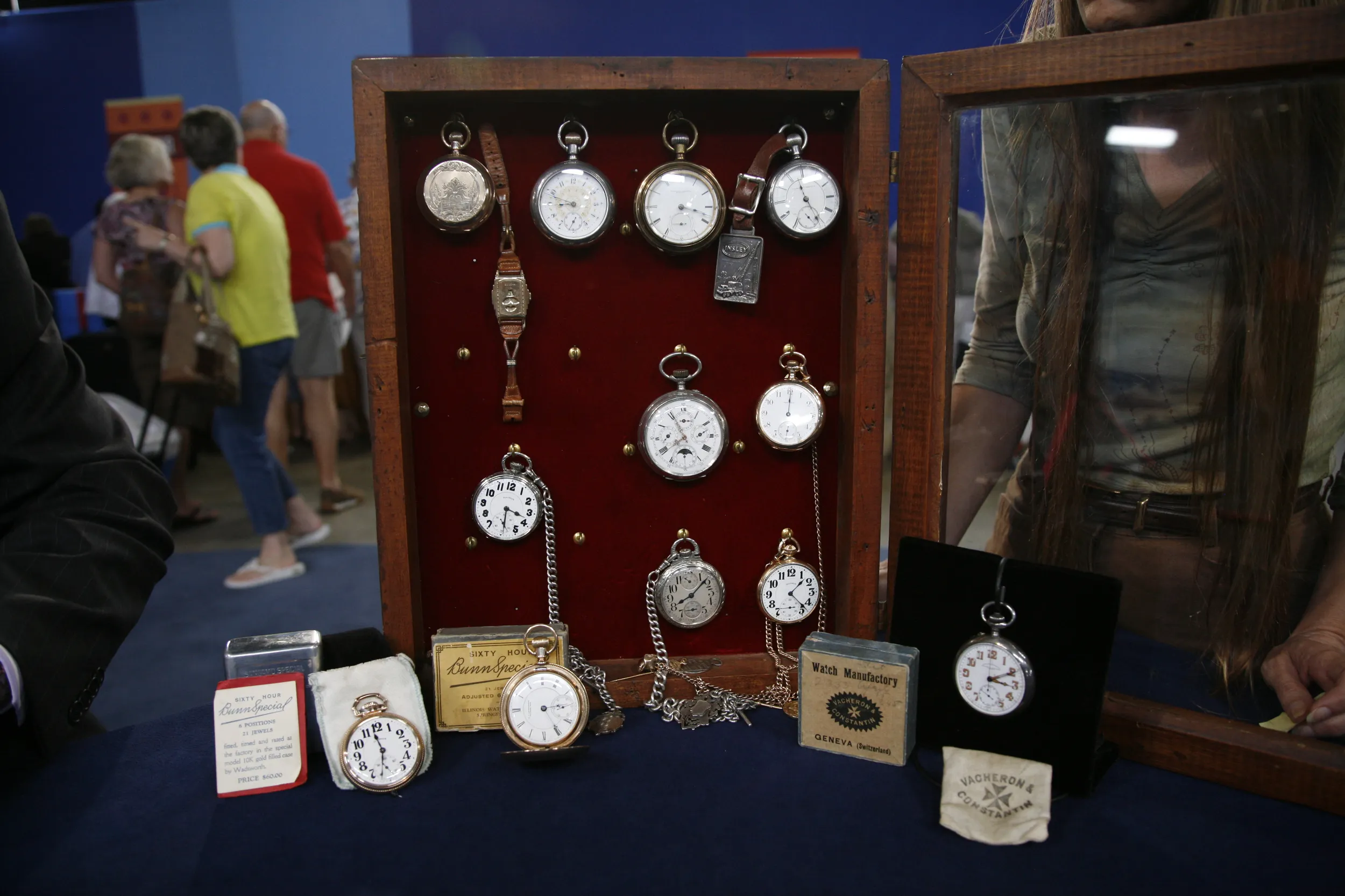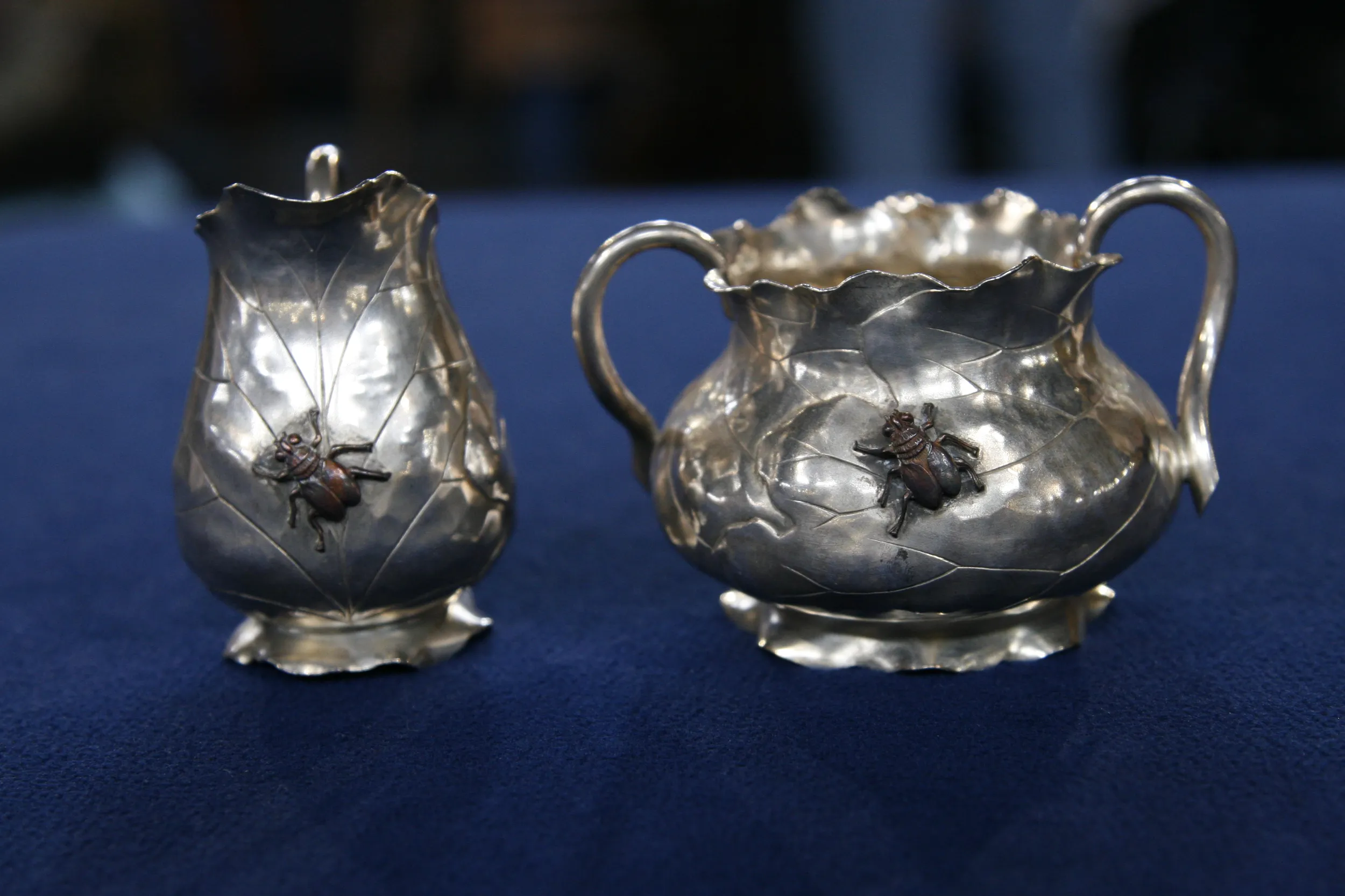GUEST: This tea set was owned by my great-uncle. He was the superintendent of the military school in Omsk, Siberia.
APPRAISER: Mm.
GUEST: And given to him by his students, because his students really liked him as a teacher. And very shortly after this gift, the students and the faculty came to him…
APPRAISER: Right.
GUEST: …and asked him to help them escape from Russia…
APPRAISER: Okay.
GUEST: …because the Bolshevik revolution was taking place.
APPRAISER: Yes.
GUEST: The Colonel, Anthony Seletsky, put together a freight train, had the families of all the students and the officers dress as Czech peasants.
APPRAISER: Okay.
GUEST: And then they took the train from Omsk to Vladivostok.
APPRAISER: All the way across?
GUEST: All the way across. It was a very difficult journey. Then from Vladivostok to Japan. And then they went to San Francisco, and finally to Baltimore.
APPRAISER: Right. And the tea set traveled all of that way as well.
GUEST: The tea set came with them in a trunk in the train.
APPRAISER: There is an inscription on the front of it, which is, in Cyrillic, "To the respected Antony Vasilyevich Seletzky, from his most grateful students at the Omsk Officers School in Omsk, Fourth of June to the Fourth of October, 1916." So it's quite clear they held him in very high regard. The tea set itself is made by the Second Artel. In Russian silver making, and in agriculture and other areas, actually, there are these small collectives put together which became known as the artels. There are elements to this tea set which I think very clearly demonstrate what became a pan-Slavic style that took influences from Europe and elsewhere and made it into something quintessentially Russian. The rather lovely bird form here is a great example of pan-Slavic design, as is also these triangular motifs here, which are very atypical of European design and something that you would immediately identify with Russia. The spacers here are actually mother-of-pearl, which I think is quite interesting. And if I just tip the teapot back, I'll show you the Second Artel mark. It's just simply a 2, and then a letter “A” right here. That is above what we call the Second Kokoshnik mark, which was the silver guarantee mark between 1908 and 1926, which dates this quite nicely with your family history of 1916. It probably was made in 1915 or 1916. It's got a nice sort of textured ground as well. Now, the fact that it was a gift to this gentleman from his students is of itself, I suppose, not as fantastic a story as the one that you later told me about him helping them to escape. And I think it's worth pointing out that while the great story of them bundled in these train cars, trundling along the Siberian mountains, really does help inspire one's imagination, it's not necessarily something that we can connect with this particular object.
GUEST: That's true.
APPRAISER: We need to take it at face value and understand that this is an inscription given to a very well regarded instructor. So with that all said, I think that if this was to come to auction I would estimate it at between $2,000 and $3,000 for the set.
GUEST: Very good. Very, very good. That's more than I thought.
APPRAISER: That’s good!
GUEST: I appreciate that. Yeah, that's well worth leaving Russia with.











